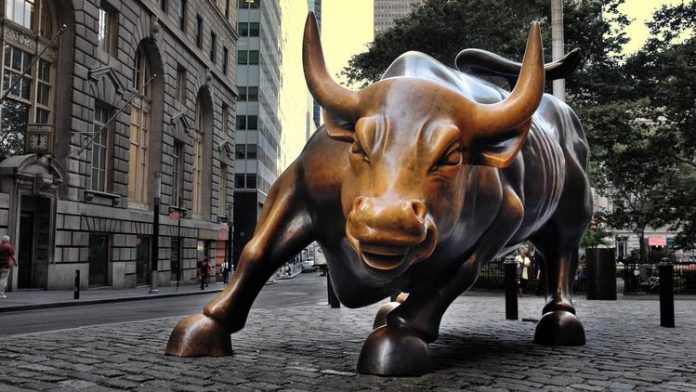Stocks look set to continue their slide today, as lingering worries about interest rates staying higher for longer and a Salesforce sell-off dampen investors’ moods.
The Dow Jones Industrial Average is down 0.8%, or about 350 points, after shedding over 400 yesterday to lead the stock market’s decline. The S&P 500 has fallen 0.5%, while the tech-heavy Nasdaq Composite has dropped around 0.4%.
Stocks have lost steam amid renewed gloom about the chances for rate cuts, sparked by data showing less cooling in inflation than the Federal Reserve would like. At the same time, hopes that Nvidia’s blockbuster earnings would spur a broader stock rally have been disappointed.
This angst about rates has driven US bond yields to their highest levels since early May this week, pushing the 10-year Treasury back above 4.5%. Though the benchmark yield has retreated today, it’s still holding above that key level, trading around 4.6%.
Salesforce’s results have sparked other worries about likely losers in the AI boom. The software maker’s shares have slid 15% after it said sales growth will stall to the slowest in its history.
The US economy, which was on fire not too long ago with growth rates of 4.9% in Q3 and 3.4% in Q4 2024, suddenly hit the brakes following a revision this morning. According to the latest GDP data from Biden’s BEA, Q1 GDP was revised downward from 1.6% to just 1.3%, the lowest since the mini-recession of Q2 when GDP declined for two quarters straight.
The big reason for this downward revision? Consumer spending. It rose 2.0% annualized, which is down from the 2.5% reported in the first GDP report and below the 2.2% estimate.
Breaking it down, the 1.3% increase was thanks to higher consumer spending (though still below previous forecasts) and housing investment, but this was partly offset by a decrease in inventory investment. Imports, which are a subtraction in the calculation of GDP, increased.
Consumer spending was up because of an increase in services, especially health care, financial services, and insurance. But this was partly offset by a decrease in goods, mainly motor vehicles and parts, as well as gasoline and other energy goods.
Housing investment was up, led by brokers’ commissions and other ownership transfer costs, as well as new single-family housing construction.
Inventory investment was down, mainly due to decreases in wholesale trade and manufacturing.
In terms of what contributed to the bottom line, personal consumption accounted for 1.34% (down from 1.68%), which is more than the entire GDP print. Fixed Investment added 1.02%, up from 0.91% in the first estimate. The change in private inventories subtracted -0.45%, worse than the -0.35% estimated previously. Net trade (exports less imports) subtracted -0.89% from the bottom line print, similar to the -0.86% detraction in the first estimate. Finally, government added just 0.23%, up from 0.21% initially estimated, but still the lowest contribution since Q2 2022.
Looking at prices, the GDP report found that purchase prices increased 3.0% in the first quarter, down from the 3.1% reported in the first GDP report and below the 3.1% estimate. Excluding food and energy, prices increased 3.2%.
Personal consumption expenditures (PCE) prices increased 3.3% in the first quarter, while the PCE “core” price index (excluding food and energy) increased 3.6%. This was also below the 3.7% estimate.
Overall, the GDP number confirms that the US economy is slowing down quickly as US consumers, especially those in the lower half, have hit a wall with maxed out credit cards and wages that aren’t keeping up with inflation.
But hey, bad news is good news for the market, right? Futures predictably jumped to session highs, although exuberance will be contained until tomorrow’s PCE report, which we expect will also miss expectations, allowing futures to resume their Nvidia-driven meltup.








